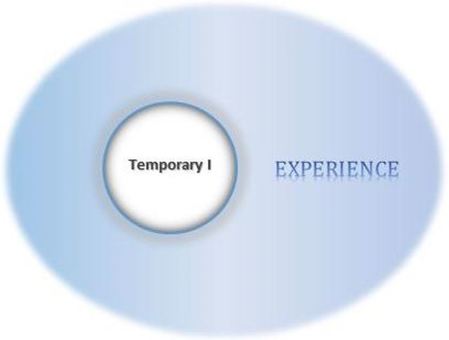What you resist not only persists, but will grow in size. – Carl Jung
There are so many mental techniques for physical pain relief. Indeed, our mind has proven to be powerful enough to cope with any pain. The question is which technique we should use in our struggle to overcome suffering.
You can find on the internet so many methods. Some of them work for some people, but for others, they don’t. However, it’s important to know that methods which involve any kind of ignoring or suppressing a painful sensation can work temporarily, but they fail in the long run and can bring about its frequent reappearance with even increased intensity. The reason is suppression. Anything we suppress will re-emerge one day. So, the suppression is the cause of pain’s reappearance. Methods which involve any kind of ignoring or suppressing a painful sensation can work temporarily, but they fail in the long run.
And the real cause of pain is our resistance to that particular sensation. So, we must accept it.
Therefore, effective pain relief techniques must have two aspects: facing the pain and accepting it. Five Exceptional Techniques Here I’ll describe five techniques that have been proven to be really helpful to me and to many other people as well. Nevertheless, that doesn’t mean they work for everyone. Also, you should always consult your physician. Before and after applying any of these techniques, it is highly recommended that you quantify the intensity of your pain on a zero-to-ten scale. By doing this way, the change will become obvious and measurable, you’ll much easier accept the true power of these approaches, and your subsequent practice will get strengthened and deepened. Before and after applying any of these techniques, quantify the intensity of your pain on a zero-to-ten scale. 
1. Dissolving the Temporary I
As one of the basic Reintegration techniques, the Dissolving the Temporary I (DTI) is a powerful method for integration or removal the unwanted emotions, thoughts and sensations. As physical pain is typically considered to be a sort of bodily sensation, this technique, if applied correctly, is extremely effective for this purpose. The technique is based on the relationship between the subject (our transient sense of self, of the “Temporary I”), and the object (in this case, the pain). The core concept is quite simple, and it works perfectly: if your transitory “I” disappears, so will do the object you were experiencing. To learn this 5-step technique, you will have to do some introduction exercises first, but it’s definitely worth the effort. Here you can find the detailed instruction for learning the method. If your transitory “I” disappears, so will do the object you were experiencing.
2. All-Inclusive Attention
The concept of “open focus” or “diffuse attention” was thoroughly researched and developed by American neuroscientist Les Fehmi.[1] Normally, our focus is too narrow as we are trying all the time to concentrate on only one thing, missing everything else. We are typically “lost” in anything we do – in thoughts, emotions, conversations, sensual pleasures, anxiety, fear, and so on. It is an involuntary process, a habit of trying to focus on a single object as though we are continually in the living conditions that demand our “fight-or-flight” mode of functioning, which leads us to a constant accumulation of stress and subsequent suffering. [1] Fehmi, Les. The Open-Focus Brain: Harnessing the Power of Attention to Heal Mind and Body. Shambhala Publications. Kindle Edition. Normally, our focus is too narrow as we are trying all the time to concentrate on only one thing, missing everything else. We are typically “lost” in anything we do.
We should definitely change this habit, not only to release stress and overcome pain but to the benefit of all aspects of our lives.
First, we should learn how to extend and diffuse our attention. Here’s how: Open your eyes (if they are closed), look at the wall in front of you and pick up one distinctive point on it. (This we will call the ‘physical attention,’ as opposed to ‘mental attention,’ which means to focus your mind externally or internally on something.) Concentrate on that point for 15-30 seconds. If any thought arises, just accept it and return your physical and mental attention to the point on the wall. Then, while keeping your eyes fixated on the point, extend your mental attention to a circular area around the point. Gradually extend the area of your mental attention more and more, while keeping your physical attention at the chosen point. Wander around the room for a while with your mental attention. If your eyes unintentionally move, simply return them to the first point of the physical attention, and continue with the other parts of your eyesight, that are preferably more away from the physical point of attention. You may even try to become aware of the things behind your physical eyesight or to include sounds and other sensations. After several minutes of shifting your mental attention around, try to immerse yourself into a unified attention - be mentally attentive of your physical point and everything else, including yourself. Now, after some initial practice of the all-inclusive attention, you will be able to do the pain removal process. First of all, you need to locate the small area within your body that represents the pain. Even if your pain is all-encompassing, permeating your whole body, you should first pick up one part of it where the painful sensation is most intense. Next, concentrate on the most painful area. Let it be your starting point for the similar process of extending the attention, as described above. This time, include into your awareness not only the whole visual area, but also all sounds you are hearing, all other sensations you are sensing at the moment, everything else you might be experiencing, and space which is behind all of that. Notice that your pain is only a small portion of your whole experience now. Allow it to spread, diffuse and dissipate into your wide field of attention, to merge with your whole experience, awareness, and space beneath everything. It will dissolve. Do this for about 30 seconds to one minute. Repeat the process from the beginning (locating and concentrating on the pain, then diffusing it through all-inclusive attention), as long as there are any traces of the pain. 3. Accepting and Dwelling in Pain This is a straightforward and also very effective way of coping with pain. It is based on the fact that everything we resist, persists. Even more, it’ll grow up over time. Therefore, the remedy is to accept it completely. And that is not only applicable to physical pain but to virtually anything in our lives. Whenever we completely and honestly accept any thought, emotion or sensation, we become free of it. It will not bother us anymore. We have learned that lesson.
0 Comments
There are many situations where you are trying to relax, meditate, of focus on a serious task, but fail to even begin with it, due to numerous distracting thoughts usually mixed up with unpleasant emotions. If you find yourself in this state of mind, struck by a continuous avalanche of thoughts and emotions, you can apply this simple method: pick up only one physical sensation that you are sensing at that moment, and concentrate on it. You will calm down immediately.
Usually, only 10 to 20 seconds of such focused attention will be enough to calm your mind and relax your body. Pick up only one physical sensation that you are sensing at that moment, and concentrate on it. You will calm down immediately.
Now let us pass through an example of a real situation.
So, you are thinking now about some problem. Various thoughts are coming and going, grasping your whole attention, engaging and even possessing your whole being, moment after moment. You have identified with those thoughts and emotions completely and have forgotten of all else around yourself. It lasts for minutes, perhaps even for hours. Being overwhelmed with the problem, you can’t relax, can’t get enough rest and sleep. Simply put, you are unaware of your unawareness. Suddenly, you are finally becoming aware that you are thinking too much, out of balance, out of here and now. You are seizing that moment immediately and deciding to calm down and become mindful. It is not a problem because you have this effective technique at your disposal. AuthorNebo D. Lukovich There are countless relaxation techniques that can be found on the Internet. I would like to present you here a procedure which is a mixture of well-known step-by-step relaxation methods and one of the basic Reintegration System's techniques called “Dissolving the Temporary I.” We will call this relaxation procedure the “Relax and Reintegrate” technique (RR). It is not much time-consuming, and is suitable for many purposes, whether we want to get rid of stress or to prepare ourselves for a meditation or some more complex inner work. I have to emphasize that this method is not a mere relaxation process. It is a kind of deep meditation on itself. It releases huge amounts of tension, stress and anxiety. Moreover, through this technique, we will often be removing many layers of various inner obstacles, such as traumatic memories, suppressed emotions, limiting beliefs, etc. Any tension in our body is actually caused by some of these inner hindrances, and by releasing it we are re-integrating those particular causes, directly or indirectly. Here is the Relax and Reintegrate technique:
By doing this way, any tension will be gone quickly and completely. If any emotion or other content of the mind appears, it simply means that the tension was caused by it and now it’s released, ready to be re-integrated into the wholeness of your being. Do not miss this chance. Do the DTI immediately on every mind content which arises. In this way, the simple relaxation turns out to be a deeply transformative meditation. Of course, you will need to learn the DTI technique and make it habitual. But once it becomes a routine, you will be able to do the RR technique anywhere. You can RR while you are waiting in a queue, when you are lying in bed, or while sitting, whenever you have some free time. You will only have to adjust slightly the procedure to the particular circumstances. If done regularly, it will deeply transform your life.
There are several very efficient and innovative methods for dealing successfully with fears, i.e. reintegrating them back into our personality. But first, let me elaborate a little bit on the nature of fears.
What are fears? Fears, together with desires, are some of the basic life dynamisms in every living creature. Fears drive us back from an experience, while desires drive us toward it. Those are two basic dynamisms within us – the repulsive and the attractive ones. Therefore, they are deeply ingrained in the roots of every human being, which makes them extremely important to deal with in any kind of psychological or spiritual work.
In psychology, fear is defined as an unpleasant emotion induced by a real or imaginary threat, which causes a change in our thought patterns, biological functioning or behavior (such as running away, hiding or freezing).
Types of fears The function of rational or appropriate fears is mostly protective – they help us to survive and they are related to our primal biological needs – avoiding life-threatening situations and as such have inherently positive roles. Generally speaking, we don’t have to overcome them, unless they are exaggerated. Irrational or unfounded fears are induced by some imaginary threats and they are responsible for undermining our health, confidence, desires, plans, hopes, and relationships with others. Therefore, we should deal with them as meticulously as possible. These are the most common irrational or exaggerated fears in people (often referred to as phobias):
Triggers Every fear has its own trigger which launches it. It could be a concrete person or situation which appears from time to time in our everyday life. Or it’s the occurrence of a specific thought or another emotion within us. For example, our boss has invited us to a meeting. Although you exactly knew that the subject of discussion shouldn’t be worrying you, it still triggered a strong fear within yourself that you could be attacked. The trigger had been formed much earlier before on many similar occasions. Our subconscious mind has connected these two types of occurrences and formed the trigger and its corresponding irrational fear. The connection between the trigger and the fear is very tight and habitual, which often means that we need to deal with triggers too, in order to avoid the manifestation of their emotions, unless we reintegrate the emotion itself. However, if we were able to remove all triggers of the fear (or any other unpleasant emotion), we wouldn’t remove the fear itself from our psyche. It would pose a dangerous situation because that emotion would need to express itself in some way, which would lead to some uncontrolled outbreaks or even to personality disorders. Thus, if we deal with triggers, we must deal with their fears concurrently. I recommend that you make a list of fears together with their triggers. Go through the list and try to reintegrate all emotions as well as triggers. Now, here are several concrete ways to deal with fears. We can deal with fear in three stages of its cycle:
What to do while fear is being initiated They say that the easiest way is to put out the fire at the beginning. The same is with fears – we should try to intercept the fear while it’s being triggered. If we had been previously working on the triggers, it would be much easier for us to recognize the trigger itself and the initial appearance of the fear. That’s the ideal moment of entering the state of Pure Consciousness or Presence. Just be aware, be alert in a calm and peaceful way and watch the trigger and/or the developing emotion. If we manage to stay in that fully conscious state for a while, the fear will subside quickly and completely. If you repeat the same process several times, you can even free yourself of the fear’s grasp forever. What to do when we are overwhelmed with a fear If we miss the trigger and find ourselves already overwhelmed by a particular fear, consider that as a good opportunity to immediately deal with it. But that’s easier said than done. First, we must regain our stability and confidence. Breathe deeply. Many practitioners claim that breathing rhythm 7/11 is the best for that purpose. That’s simply counting to 7 while inhaling and to 11 while exhaling. Our attention should be on the breathing itself, like in a breathing meditation. Just try to consciously follow the movement of air into your body and out of it, along with any sensations that the movement produces. That’s the breath mindfulness. By doing this way, you will calm yourself down and gain confidence. The next thing to do is to actively reintegrate the fear itself. In his remarkable book “The Power of Now,” the German author Eckhart Tolle gives us some very useful advice related to the very moment when the “pain body” (in this case: the emotion of fear) attacks: “If you are able to stay alert and present at that time and watch whatever you feel within, rather than be taken over by it, it affords an opportunity for the most powerful spiritual practice, and a rapid transmutation of all past pain becomes possible.” He adds another concrete instruction: “Focus attention on the feeling inside you. Know that it is the pain-body. Accept that it is there. Don't think about it—don't let the feeling turn into thinking. Don't judge or analyze. Don't make an identity for yourself out of it. Stay present, and continue to be the observer of what is happening inside you. Become aware not only of the emotional pain but also of "the one who observes," the silent watcher. This is the power of the Now, the power of your own conscious presence. Then see what happens.” Another effective and pro-active way I would like to recommend here is one of the basic Reintegration techniques, Accepting the Temporary I (ATI). It is based on the concept of the “Temporary I,” which is your subtle feeling of self, your I-feeling within your body at the moment, while you are experiencing some mind content.
It is typically located in your head, neck or upper chest, although it could be positioned in another area of your body, depending on the experience itself.
The Temporary I shapes your life experience. It tunes yourself to particular thoughts, emotions or external circumstances. If the foundation of the experience is eliminated, then the experience itself will vanish. Therefore, if the Temporary I disappears, so will the experience that it produces. As soon as you learn this technique, you will instantly recognize its astonishing efficiency. Whenever you become aware of your anxiety or fear, apply the ATI method and you will sense an immediate relief. So, when you want to dissolve an unwanted experience with the ATI technique, you will: 1) Direct your attention to it and pinpoint its location (if possible); 2) Feel your “Temporary I” from which you are experiencing the content, and finally, 3) Completely accept the “Temporary I.” The only criterion you could use for examining the success of the process is whether you find your consciousness pure, empty of content and diffused afterward, or not. The ATI technique is described in detail here, while the concept of Temporary I and how to find it is depicted here. You can do the ATI in countless common situations. For example, if you become aware that you are overwhelmed with fretful thoughts, you can accept and dissolve your Temporary I from which you are experiencing them. They will disappear, at least for a while. Or, if you find yourself flooded with emotions of fear, worry, angst, or anger, notice the location of your Temporary I and accept it. Of course, if this mind content on which you were doing the ATI arises again, just repeat the procedure until it vanishes. Similarly, if you are in the company of a nervous or irritating person, you may quietly accept several times the Temporary I from which you are feeling the annoyance. There is no limit to the practical implementation of the ATI, as it requires only seconds of mild, conscious effort to profoundly detach from the unpleasant situation or emotion. How to deal with fears when they are in a dormant state Although it may seem paradoxical, fears do have inherently helpful roles in our maturing to a well-integrated, spiritual person. They have deeply hidden genuinely positive intentions for us, but those intentions have been gradually distorted into apparently negative behavior during long periods because of numerous misconceptions, limited perception, and challenging environment. However, we should reintegrate them. As we are expanding our consciousness, we don’t need them anymore. And nobody of us likes to have fears, so are already motivated pretty well to overcome them. As is the case with all other parts of the personality, we should always face them, accept them wholeheartedly, and finally, transform and reintegrate them completely into our being, using an appropriate technique. We should never fight them! If we fought them, we could suppress and push them temporarily into the depths of the subconscious. We were actually doing that many times in our past, but this approach has only strengthened fears, in the long run, enabling them to surface out from time to time and overwhelm us with much more power than before. So, if you missed the chance of dealing with fear in its initial phase or while being fully expressed, it’s still not too late to reintegrate it. As it is now in its “dormant” state, waiting for the next appropriate situation to express itself again, the fear must be cautiously invoked within our mind. Visualize one of its triggers. That should be enough for the emotion’s partial re-appearance. Stay fully conscious and aware. Stay present. Then do the ATI technique several times. If you are determined to deal with all other fears from your list that was mentioned above, just go boldly through and relentlessly reintegrate the fears, one by one. You will probably need to repeat the whole circle a few times, if you are using the ATI. Don’t forget to remove their triggers. If you don’t do that, the triggers will continue to re-create the fears and aversions, driven by corresponding neurological habits previously formed within your brain. Apply the Accepting the Temporary I (ATI) technique again. However, there are other techniques for reintegrating fears that are even more advanced than ATI: the Inner Triangle (IT), Single Chain (SC) or Double Chain (DC) techniques, Dissolving the Temporary I (DTI), Dissolving the Temporary I Plus (DTI+) and Gentle Touch of Presence (GTP) – they all are thoroughly explained in the book “Inner Peace, Outer Success.” For those of you who aren’t in a position to get the book, I recommend using the ATI technique only. Done several times (which depends on the complexity and severity of a particular fear), it will be still enough for this purpose in many cases. Loving-kindness Love dissolves all negativity in us. Of course, I’m not referring here to a kind of romantic love, but to a universal, unconditional Love, deep compassion, like the love parents feel toward their children, or similar. That kind of love has also a great healing power, including healing fears. We can heal ourselves and other people as well, just with Love. If we were able to open up our hearts entirely and lastingly, I believe it would be absolutely enough for complete healing. How can you wake up Love in your heart?
I can recommend only some of the numerous ways to do that. For example, imagine that a little child, or toddler, is approaching you. It’s smiling innocently at you, wobbling in its walking. It’s so cute, with bright, smiling eyes staring at you. The child is giggling with its sweet voice, telling you “I love you!” You are embracing it with warmth. How couldn’t you feel Love toward such an innocent being? Let Love rush out from your heart.
When you open your heart, let Love fill you completely. Extend it also to yourself. Love yourself with your whole heart! Feel that you deserve the deepest Joy and Happiness. After all, you have always been giving the best you could. You, as that child, need only to be happy. You only want to be happy in your life and you definitely deserve that! Love yourself, your body, and your whole being. Wish yourself all the best. Love all parts of your being and personality, all traits, flaws, mistakes and imperfections; love the body that has served you so dutifully your whole lifetime; love your life, your past, present and future, anything that comes to your mind. Let Love amplify and expand to encompass all people around you. Love your family, your children, spouse, parents, friends, colleagues; love your job, your errands and annoying things; love your enemies, too; let Love pour out from your heart toward all of them. Extend your Love to all humanity. Feel yourself as a part of it. Love your darling pets; love all animals, plants and all living beings. Love your Mother Earth, the entire Universe, the entire Existence. Feel the fact that countless beings exist within Creation, and all of them are trying to be happy in some way. Wish them all true happiness with your whole heart. This is Love and it is miraculous. It can potentially heal, harmonize and mature everything. Try not to expect healing, but love yourself and all beings around you. If the healing should come, it will come, to both you and inevitably those around you. Something wonderful will surely happen, although you cannot know what it will be. Additionally, here is a well-established procedure for the loving-kindness meditation, as practiced in some of the Buddhist traditions. Basically, it boils down to this: 1. Sit in a comfortable position. Relax. 2. Do the ATI a few times. 3. Move the center of your being into your Heart (you I-point in the chest). Repeat the following loving-kindness phrases:
4. Think of someone for whom you have very warm and loving feelings. This can be a parent, friend, sibling or even a pet. Repeat the same loving-kindness phrases toward that being:
5. Think of someone for whom you have neutral feelings. This can be an acquaintance, a neighbor, or even a person you know of from the media. Repeat the same loving-kindness phrases from the previous steps for this person. 6. Think of someone for whom you have negative feelings. Repeat the same loving-kindness phrases for this person as well. 7. Radiate loving kindness to all beings in the Existence. Repeat the loving-kindness phrases for all beings. Practicing the loving-kindness meditation in any of the described approaches will lead you not only to gradual reintegration of all your fears, but also of other “negative” elements of personality and lead you directly toward the final liberation, Nirvana or God, whatever expression you prefer. Reintegrate your fears. You will feel immense relief and deliverance. You will release yourself from an inner prison. You will sense the limitlessness. AuthorNebo D. Lukovich  There could be various causes of self-sabotage. For example:
How to determine the cause of your self-sabotaging behavior and remove it?
The basics steps of the Determination Technique are:
These are the three basic ways in which you can remove most of your self-sabotaging behaviors and traits. However, some of them will be so deeply ingrained in your subconscious that you will need much more comprehensive approach, dealing with many of the above-mentioned types of inner obstacles. For those cases, again, you can refer to the Reintegration System, but there are also numerous great psychological or spiritual techniques that can be found on the Internet or within the professional literature. One more tip: regular sitting meditation and mindfulness will surely help you, not only with the self-sabotaging issue, but also with all other aspects of your life. Good luck with your inner work! |
Please note that most of the articles have a "Read More" break, which is sometimes hardly visible.
It is located at the bottom of visible part of the article, on the right side. To continue reading the article, click on that link. This page may contain affiliate links meaning we earn a commission if you use those links.
We only recommend pages we appreciate and trust. Archives
March 2023
Categories
All

|
For guest posts or placing ads on our website, please use the contact form on the 'About/Contact Us' page.









 RSS Feed
RSS Feed

